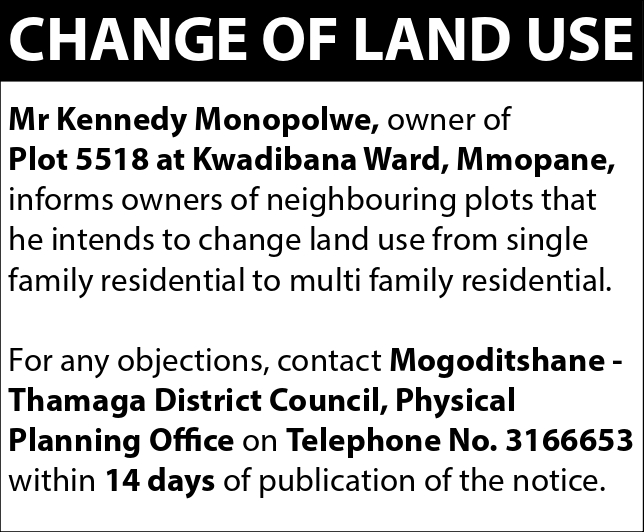The Board of Healthcare Funders (BHF), a representative body for the continent’s healthcare funding industry, has released a report on the Botswana medical funds industry. This is the first report of its kind to be developed on medical schemes in Botswana and for medical funds in the Southern African Development Community (SADC) region by the BHF.
Botswana currently has a total of five medical funds registered with the Non-Banking Financial Institutions Regulatory Authority (NBFIRA). Four are members of the Board of Healthcare Funders and submitted data for preparation of the report. The four medical aid funds collectively represent just over 95 percent of lives covered by medical aid funds in Botswana.
Said Lesego Pule, Chairman of the Botswana Association of Medical Aid Funds,speaking at the on-line launch of the report: “Our aim is to drive the improvement in the quality of healthcare in Botswana and create access to affordable health services to the population. This will support and enable us to attain the objectives that we have set out in order to achieve this goal. Our view is that collectively we can achieve meaningful impact for the healthcare industry in our country.”
The report highlights a number of metrics to measure the growth of medical aid funds in Botswana, assess the performance and sustainability of medical aid funds in the country, measure the risk provision of the medical fund industry, and measure quality of care, which is an important component of Universal Health Coverage (UHC). It also tracks out-of-pocket expenditure by medical aid beneficiaries to ensure that funds provide best value and quality healthcare for members.
Speaking at the same occasion, Charlton Murove, BHF Research Head, noted: “The objective of the report is to evaluate the contributions of the medical aid funds to the health status of the country’s population, identify gaps and establish areas of improvement to enhance member experiences of medical aid funds. The report will be useful for future planning and the establishment of industry-wide responses to some of the challenges that we identified from this research.”
The research found that Botswana is well positioned to deliver on UHC objectives, given its benefit structure and low pricing model. Across the four funds, there were 30 benefit options in 2018 and an improvement in 2019, with 29 benefit options. The average number of options was therefore 7.25 in 2019. Likewise, the average option size increased in 2019.
Furthermore, the average age of beneficiaries in Botswana is relatively low at about 29 years, compared with South Africa where the average medical aid member age is approximately 32 years. Similarly, the pensioner ratio is also low at about 3 percent, compared with South Africa, for example, where the average pensioner ratio is about 9 percent.
Murove noted that Botswana remains among some of the most affordable countries in the region in terms of its medical aid average pricing structures. Compared with South Africa, for example, the average cost of medical aid cover in Botswana is BWP400 compared to R1,300, with the current exchange rate at R1 to BWP 0,70.
The Botswana medical funds environment continues to grow. In 2019, the industry saw an 5.8% growth increase compared with South Africa, for example, where the industry has stagnated. In 2019, the medical scheme industry grew by only 0.5% in 2018 in South Africa. The reserves of these funds, calculated as a proportion of gross annual contributions, grew from 50.6% in 2018 to 51.6%% in 2019.
“Healthy solvency reserves is a good indication and means that these funds have the ability to invest in programmes for the benefit of their members, and in the event of a crisis can shoulder the financial burden on behalf of members,” Murove pointed out.
However, there are some areas that still need improvement. Critical to note is that the disease burden faced by the funds in the country is high and on the increase while prevalence of HIV and cardiovascular conditions is also very high.“This means that medical aid funds need to put in place health interventions to manage these conditions to limit their effects on sustainability,” Murove observed.
He explained that the report found that the overall OOP expenditure in Botswana, compared with countries like South Africa, remains relatively high. The OOP expenditure represented approximately 20% of total healthcare expenditure in 2019, compared with South Africa, which represents 19% of total healthcare expenditure. However, these are some of the patterns that would have remained unknown if a report of this nature had not been developed.
“Limiting OOP payments is crucial to supporting households in shouldering the financial burden of healthcare costs to enable the attainment of UHC,” Murove noted. “This report presents an opportunity for reflection around some of these issues and will enable medical aid funds to look at areas of improvement going forward.
Pule concluded: “The report provides a benchmark and gives insights to enable a holistic view of our country’s medical aid funds’ landscape and performance. We are not too far off the mark. We now know where we are doing very well and areas that need improvement. We can now begin to review those areas to ensure alignment with industry best practices to present the best to our members and a model framework that can be used for the entire region.”




